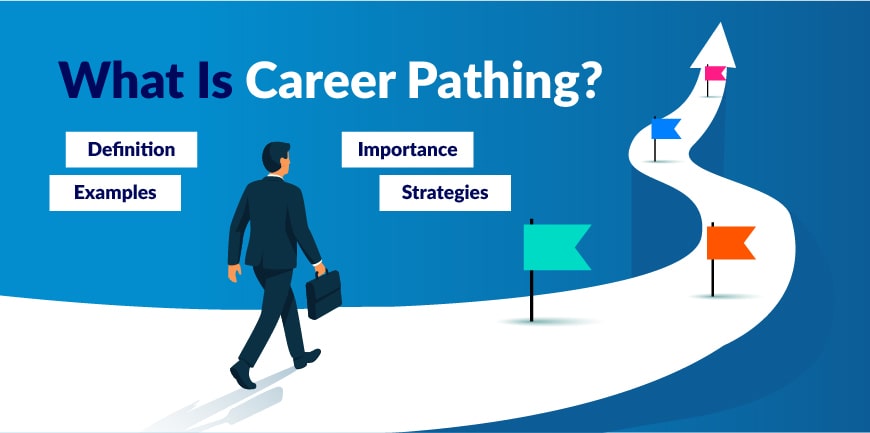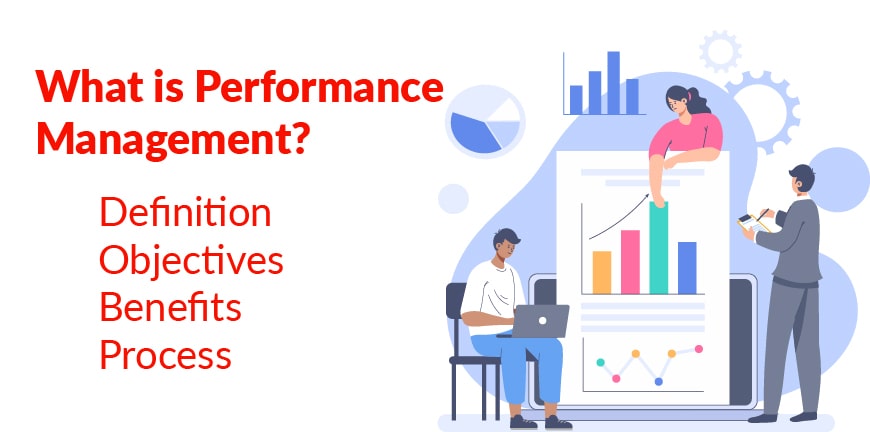
5 Best Virtual Onboarding Practices for New Hires
04/06/2025
From Downsizing to Uplifting: Using Outplacement to Turn Crisis into Opportunity
09/06/2025- What Is Career Pathing?
- Why Is Career Pathing Important in 2025?
- For Employers
- What Are the Different Types of Career Paths?
- What Are Examples of Career Paths?
- What Are the Key Benefits of Career Pathing?
- What Are the Steps to Create a Career Pathing?
- What are the Challenges of Implementing Career Pathing Programs?
- What are the Best Practices of Career Pathing?
- Key Takeaways
- Frequently Asked Questions (FAQs)
One of the common reasons given by employees to not accept a job offer or leave their current company is the lack of a career development program. What is the best way to overcome this persistent problem? A short answer to this is the implementation of a robust “Career Pathing Program”. But how to do it effectively? Let’s answer this question by dwelling deeply and understanding the importance of career pathing, definition, examples, steps challenges and best practices.
What Is Career Pathing?
Career pathing meaning is quite simple and states that “Career pathing is a systematic process of shaping a career path of employees by aligning their skills, expertise, and interests with the company’s goals and objectives creating a win-win situation for both employees and employers. ”
Career pathing also referred to as ‘career mapping’ is part of talent management strategy in a broader perspective. Career path steps outline an employee’s career growth trajectory within a company or through an entire career journey. It begins with an assessment where employees evaluate their current level to the action plan required to accelerate their career progress in an organised manner.
Career pathing is vital for both employees and companies as the success of both depends on the impact of the decisions and actions taken to make significant improvements.
Why Is Career Pathing Important in 2025?
Career pathing plays a pivotal role in helping organisations and employees foster a positive growth environment that builds mutual trust and creates a success drive for both parties. Here are the reasons that make career pathing important for employees and employers in 2025:
For Employees
1. Enhanced motivation and job satisfaction
Employees with clear career paths can focus better since they know what must be done to achieve the objectives leading to improved motivation and job satisfaction.
2. Improved employability
By following career path steps diligently, employees can elevate their skills and expertise enabling them to improve employability and stay competitive in the job market.
3. Financial stability
Career pathing approach helps in getting promotions and better appraisals leading to financial stability and a better standard of living.
For Employers
1. Higher employee retention rates
A strong commitment by employers towards implementing career pathing strategies can help in improving employee loyalty resulting in higher employee retention rates.
2. Improved workforce development
Career Pathing helps companies align their strategic objectives with workforce development plans leading to highly skilled employees ready to take up any challenge.
3. Gain a competitive edge
A comprehensive and personalised career pathing program will help employers retain top talents and gain a competitive edge for higher business growth.
What Are the Different Types of Career Paths?
Here are the 3 career path types usually preferred by employees and employers within the organisational boundaries to create a better career growth plan benefiting both parties:
1. Skill-based career path
It involves developing and honing a specific set of skills and expertise to advance in a career rather than focusing on job titles and educational qualifications. Ex: web development, data analysis, project management, etc.
The key aspects of a skill-based career path include:
- Focussing on skills
- Flexibility and adaptability
- Practical application
- Self-driven learning
- Skill-based promotion
2. Knowledge-based career path
It focuses on creating a career map based on knowledge gained by employees over the years in a specific field typically involving education and advanced training. Ex: IT consultants, scientific research, medicine, etc.
The key parameters involved in a knowledge-based career path include:
- Problem-solving.
- Specialised knowledge.
- Advanced education and training.
- Continuous learning.
3. Cross-functional career path
It is a combination of both skill-based and knowledge-based career paths built on the foundation of in-depth knowledge and specialised skills acquired over the long term. Here the employees will have elevated problem-solving skills and make informed decisions. Ex: Product management, DevOps Manager, Data Analytics Lead, etc.
The key aspects of the cross-functional career path include:
- Developing and honing cross-functional skills.
- Broadening perspective.
- Strategic involvement in different departments.
- Improved communications and collaboration.
- Enhanced organisational agility.
What Are Examples of Career Paths?
According to career pathing meaning, career trajectories may be going vertically upwards or laterally sidewards based on the type of roles and skills required. Additionally, the success of a career pathing depends on an individual’s commitment and appetite for success along with a willingness to take added responsibilities for making the business operations more efficient.
Here are the typical career path examples you can come across in most organisations:
| Department or Niche | Career Path |
| Administration | Data Entry Operator -> Receptionist -> Administrative Assistant->Executive Assistant->Secretary->Administrative Service Manager-> Office Manager->HOD |
| HR | HR Intern-> HR Assistant->HR Assistant->HR Specialist->HR Manager->Director of HR->HR VP->HR Chief |
| Sales | Sales Rep-> Account Executives->Account Manager->Sale Manager-> Regional Sales Manager->Sales Director->VP of Sales->CSO (Chief Sales Officer) |
| Software Programming | Intern or Apprentice-> Entry level Software Programmer-> Level 2 Software Engineer->Senior Software Developer->Technical Lead-> Technical Senior Manager->CTO (Chief Technology Officer) |
What Are the Key Benefits of Career Pathing?
Deploying effective & efficient career pathing programs for employees in a company can bring numerous advantages for both employees and employers. Here are the key career pathing benefits:
1. Talent Retention
A vision-based career pathing program will help retain top talents within an organisation for the long term.
2. Talent Attraction
An integrated career pathing initiative paired with a competitive pay scale will attract top talents across domains helping the company maintain business continuity and brand reputation.
3. Promotes Learning Culture
Through a systematic career pathing program, companies can foster a learning culture within the organisation leading to better outcomes.
4. Improved Productivity
In the quest to achieve better career growth through career pathing initiatives, employees will perform their roles and tasks more effectively resulting in higher productivity and increased profitability.
5. Elevate Success Planning
Companies can identify and nurture employees to are capable of assuming leadership roles in the future through an effective career pathing program. This will create a steady pipeline of qualified employees to fill management roles elevating succession planning outcomes.
6. Better Alignment with Organisational Goals
When employees know their contributions will make a significant impact on business growth and brand value enhancement, it creates a better alignment between the career growth of employees with the organisation’s goals and objectives.
7. Increased Innovation and Growth
A definitive career pathing program will help employees elevate their skills and knowledge exponentially creating the foundation for increased innovation and growth.
What Are the Steps to Create a Career Pathing?
Here are the key career path steps that a company must follow to achieve the best outcomes:
Step 1: Identify the company’s business progression needs
Evaluating career aspirations of employees against the business vision and goals is the pivotal step in building a concrete career pathing strategy and action plan. Employees must be clear on their roles and responsibilities, day-to-day tasks, and career steps that brings best outcomes for their career goals without disrupting business continuity. On the other hand, companies must make a thorough assessment to align career pathing plans with strategic goals like fixing skill gaps and creating a steady pipeline of future leaders.
In this step, workforce trends such as attrition rates, disengagement, etc., are assessed along with identifying critical roles or skills necessary for the company’s future. By addressing these critical areas, organisations can lay the foundation to create personalised career mapping flowchart beneficial for both employees and employers.
Step 2: Deploy a competency-centric talent framework
A Robust talent framework is the heart of a well-drafted career pathing program. It starts with defining job descriptions and grouping them under a cluster that shares similar skills, competencies, and qualifications. A competency-based talent framework translates objectives and goals into an action plan that aligns performance with business outcomes.
Step 3: Provide Career Pathing Tools for Execution and Monitoring
Companies must provide the right tools and checklists that offer great support to planning and assessment of the career pathing program. Visual pathing tools and career maps enable employees to explore various opportunities within the company, identify roles that match their career aspirations and skills, and understand the steps required to achieve success.
Step 4: Provide Adequate Training, Maintain Communication, & Measure Success
Organisations must prioritise training to ensure employees are on the right path to maximise the benefits of the career pathing program. Additionally, there must be a streamlined communication channels to discuss the progress and shortcomings regularly.
The employees must have a clear picture of how the program works, company expectations, and the advantages it offers. The management team and HR department play a crucial role in creating seriousness among employees and ensuring active participation through adequate guidance and support.
Additionally, companies must assess the career path program effectiveness regularly. Employee engagement and retention rates serve as KPIs to gather valuable insights and feedback. Based on the feedback and recommendations, companies must modify their career path steps to ensure employee and organisational needs are always met.
What are the Challenges of Implementing Career Pathing Programs?
The ongoing challenges that can hinder the progress of career pathing programs include:
1. Employee Reluctance
Many employees may be accustomed to the existing role and enter a comfort zone creating hurdles for companies to create the required motivation for enrolling in career pathing initiatives.
2. Lack of Transparency & Clarity
The company might not be able to align the career pathing initiatives with the organisational goals for certain roles and this ambiguity may lead to trust issues and create an environment that lacks transparency and clarity.
3. Insufficient Leadership Support and Training
Sometimes the leadership group may not be in favour of deploying career pathing programs due to lack of clarity or the fear of increased workloads. Additionally, the project managers may lack enough expertise to guide employees in the right direction to derive the best outcomes from the career pathing initiatives.
4. Logistical and Technology Challenges
On some occasions, the companies may lack sufficient resources and technology support to facilitate extensive career pathing programs.
What are the Best Practices of Career Pathing?
The best practices for achieving success in career pathing programs include:
1. Make Career Pathing Inclusive
Companies must ensure that career pathing is not considered as one task but rather an integral part of the day-to-day operations with a strong emphasis on active participation and periodic progress reviews.
2. Use Internal Expertise Effectively
The company must ensure management and leadership group members are fully involved in career pathing programs providing guidance and mentorship to employees to improve their skills and expertise that can elevate them to the next level.
3. Empower Employees to Take Ownership
The company must empower employees to take ownership of their individual care programs. Create goals with specific deadlines to push employees out of their comfort zones and achieve better outcomes. Additionally, create a safe environment where employees feel comfortable and confident to take risks, make mistakes and learn from them, and approach management in case they are stuck and need support.
4. Period Review and Feeback
The company must put the necessary efforts into reviewing the career progress of each employee and provide feedback for making improvements. Additionally, the companies must ensure employees are implementing the feedback diligently in their career path steps and measure the KPIs for further improvements.
If creating a career pathing program is difficult internally, always seek support from top HR and Employee training agencies like ALP Consulting for end-to-end career pathing solutions.
Key Takeaways
- Career pathing program aligns employee career prospects and aspirations with company goals, fostering mutual growth and long-term success.
- It enhances job satisfaction, retention, and productivity through structured, transparent growth and development plans.
- Three core paths: skill-based, knowledge-based, and cross-functional cater to diverse career aspirations effectively.
- Effective career pathing requires tools, training, leadership support, and regular feedback for measurable results.
- Challenges include employee reluctance, unclear structures, leadership gaps, and technological or resource limitations.
Frequently Asked Questions (FAQs)
1. What is career pathing?
Career pathing meaning is straightforward and states that ” Career Pathing is an ongoing process where the employer designs a career map for employees that aligns with organisation’s vision and goals and helps employees maximise their potential creating a win-win condition for both”.
2. Why is career pathing important?
A good career pathing program will help companies create a progressive working environment for employees to flourish which in turn helps in improving productivity, increasing brand value, maintaining future leadership pipeline, and enhancing employee retention rates.
3. What are the benefits of career pathing?
The key benefits of a career pathing program include increased motivation and job satisfaction, higher productivity, increased employee retention and engagement, improved succession planning, etc.
4. What are the different types of career paths?
The career path types that most companies follow as the foundation for creating career pathing programs include knowledge-based, skill-based, and cross-functional career paths.
5. What are examples of career paths?
Typical Career path examples that are practised in Indian companies include HR intern to HR chief, data entry operator to office manager, sales rep to CSO (Chief Sales Officer), etc.
Contact Us For Business Enquiry

Rajkumar Shanmugam
Rajkumar Shanmugam is the Head of HR at ALP Consulting, bringing over 19 years of comprehensive HR leadership experience across India and international markets. His expertise spans talent acquisition, employee relations, performance management, compliance, and HR transformation. Rajkumar has a proven track record of driving people-centric initiatives, enhancing workplace culture, and aligning HR strategy with business goals. With extensive experience in US staffing operations and global mobility, he continues to lead organizational excellence through innovation and employee engagement.




